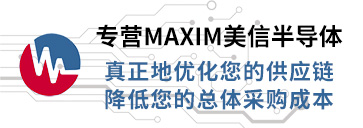

DS80CH11是Maxim美信半导体公司的一款光电产品产品,DS80CH11是系统能量管理器,本站介绍了DS80CH11的封装应用图解、特点和优点、功能等,并给出了与DS80CH11相关的Maxim元器件型号供参考。
DS80CH11 - 系统能量管理器 - 光电产品 - Maxim美信半导体高性能芯片品质 - 美信半导体
The system energy manager is a highly integrated microcontroller that provides several key features for systems including key scanning and control, battery and power management, as well as two 2-Wire serial I/O Ports. It incorporates the Dallas 8051-compatible high-speed microcontroller core which has been redesigned to eliminate wasted clock and memory cycles. Every standard 8051 instruction is executed between 1.5 and 3 times faster than the original for the same crystal speed. Looking at it another way, the high-speed core achieves the same throughput as a standard 8051 while using much less power as a result of fewer required clock cycles. As a result, the firmware can easily support many tasks required by mobile systems within a single component.
The controller is designed to off-load battery and power management tasks from the host CPU and thereby make possible an efficient solution for systems. In addition to the microcontroller core, it incorporates an 8-channel, 10-bit A/D converter with external reference so that its firmware can perform battery management tasks without burdening the host CPU. A four-channel 8-bit pulse-width modulator allows digital control of functions such as LCD contrast and brightness. An 8-bit port is provided for key scan inputs. A total of 88 parallel I/O pins are available for key scanning, system configuration, and power management control.
The system energy manager scans a key matrix and interfaces to the host CPU via an 8042-compatible port. The benefits of sophisticated power management and permanently powered functions are thereby attained without adding to the system's chip count.
Two 2-wire, bi-directional serial buses are incorporated to facilitate the management of slave peripheral devices on the motherboard, such as digital temperature sensors and potentiometers, and to support external low-speed I/O devices such as monitor configuration channels, pen tablets, and joysticks.
Because a direct interface to the X-bus is provided, the controller is not dependent on a particular core logic chip or chip set. Independent chip select inputs for the keyboard controller, power management #1, and power management #2 registers are provided.







